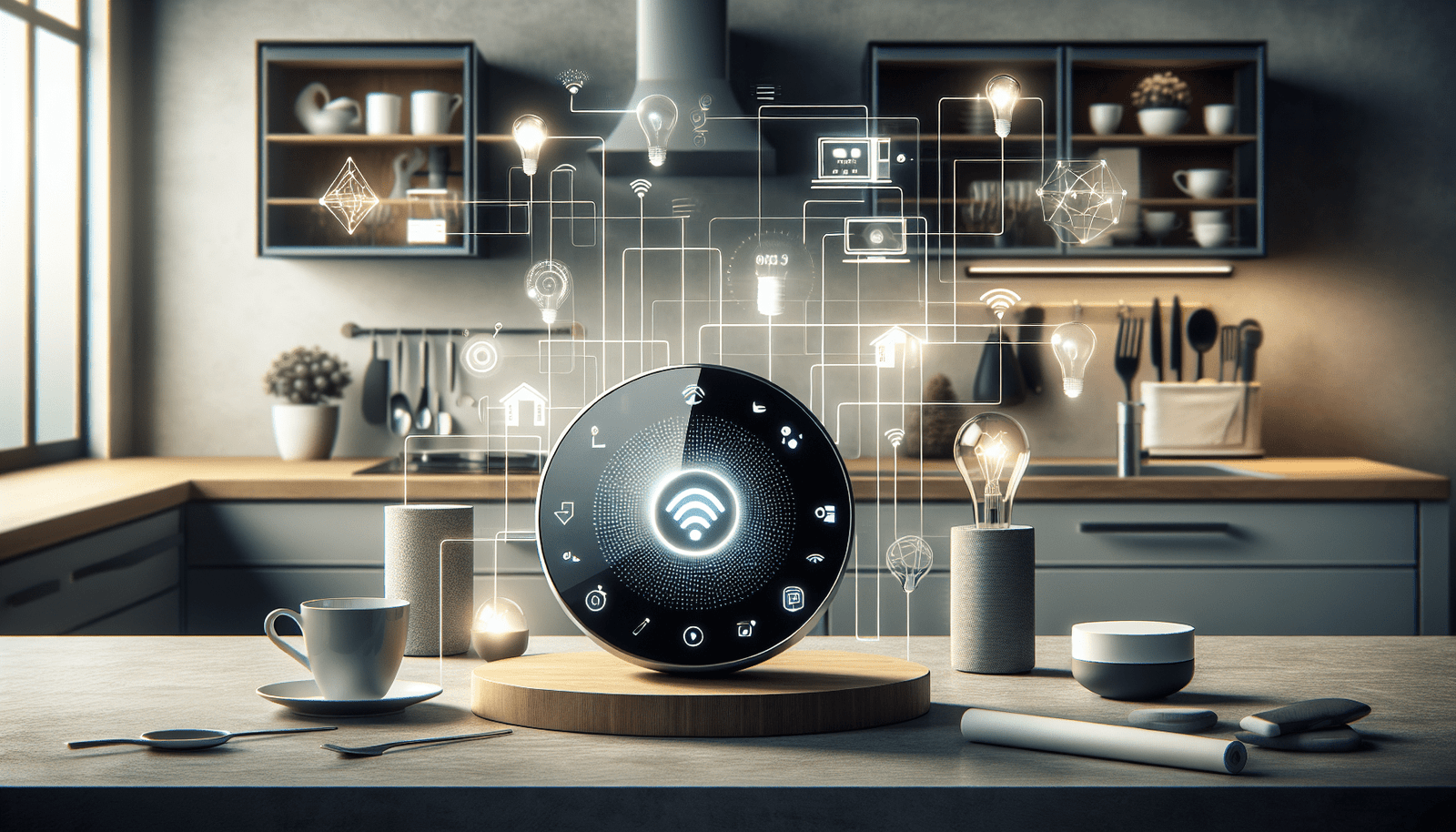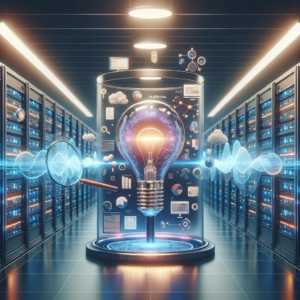Have you ever wondered how your home could be smarter and more efficient? The concept of the Internet of Things (IoT) has taken the idea of smart homes to a new level, bridging the gap between technology and everyday living. It’s fascinating how my home can become an intelligent ecosystem, enhancing my daily routine and providing a comfortable living environment.
What is the Internet of Things (IoT)?
The Internet of Things refers to a network of interconnected devices that communicate with each other via the internet. This concept allows everyday objects to collect and exchange data, putting control in my hands. Imagine a world where the coffee maker knows I want my coffee brewed at 7:00 AM, or where my thermostat adjusts automatically based on my schedule. That’s the power of IoT in creating a smart home.
Key Components of IoT
When I think about what makes up IoT, a few critical elements come to mind. Understanding these components can help me appreciate how they contribute to a smart home setup.
| Component | Description |
|---|---|
| Devices | Physical appliances and gadgets like smart speakers, light bulbs, and thermostats that connect to the internet. |
| Connectivity | The means through which devices communicate, utilizing Wi-Fi, Bluetooth, Zigbee, or cellular networks. |
| Data Processing | The ability of devices to analyze data, either locally or in the cloud, to make informed decisions. |
| User Interface | The applications or dashboards that allow me to control my devices and view their status. |
How IoT Works in Smart Homes
The functioning of IoT in my smart home is based on the seamless interaction of various devices and systems. For instance, when I unlock my smart door lock with my smartphone, the door sends data to my home network, allowing it to communicate with other devices.
- Data Collection: Devices around my home gather data. For instance, smart sensors detect temperature or motion.
- Communication: This data travels through my home network, either via Wi-Fi or other communication protocols.
- Cloud Processing: The data can be sent to the cloud, where advanced algorithms may analyze it for patterns or trends.
- Actionable Response: Based on this analysis, devices can trigger actions, such as turning on lights if movement is detected.
Benefits of Smart Homes Powered by IoT
The integration of IoT in my home offers remarkable benefits that can simplify my life and enhance comfort. To better visualize these advantages, here’s a helpful table:
| Benefit | Description |
|---|---|
| Convenience | Control all devices from a single app, allowing me to manage my home easily from anywhere. |
| Energy Efficiency | Smart thermostats and lighting systems optimize energy use, lowering my utility bills. |
| Security | IoT security systems provide real-time alerts and remote monitoring, ensuring my home is safe. |
| Comfort | Automated features like temperature control create a more comfortable living environment tailored to my preferences. |
| Increased Safety | Sensors can alert me to smoke, carbon monoxide, or water leaks, enhancing my overall safety. |
Enhancing Convenience with IoT
One of my favorite aspects of living in a smart home is the convenience it brings. With a few taps on my smartphone, I can manage nearly every aspect of my home, whether I’m on the couch or miles away.
Smart Lighting Systems
I can control the lighting in my home through my smartphone or even with my voice. From dimming the lights for movie night to setting them on a timer while I’m away, smart lighting systems adapt to my needs. They also offer features like motion detection to turn on lights automatically when I enter a room.
Voice Assistants
Voice-activated personal assistants, such as Amazon’s Alexa or Google Assistant, have become integral to my smart home. I can ask them to play music, set reminders, or control other smart devices, making everyday tasks feel seamless.
Energy Efficiency: Saving Money and Resources
Living in a smart home powered by IoT isn’t just about convenience; it also promotes energy efficiency and sustainability. By optimizing energy consumption, I contribute to a cleaner environment while saving money on utility bills.
Smart Thermostats
Smart thermostats automatically adjust the heating and cooling of my home based on my daily patterns. They learn my preferences and can be programmed to save energy when I’m not home. Often, I find myself saving anywhere from 10% to 30% on my energy costs because of this feature.
Energy Monitoring Devices
With smart plugs and energy monitors, I can track my energy consumption in real-time. This information helps me identify which devices use the most energy. By making small changes, like unplugging devices when not in use, I can further reduce my energy consumption.
Enhancing Security with IoT
Security is a primary concern in any household. Thankfully, IoT technology provides a range of solutions that keep my home safe and offer peace of mind.
Smart Security Cameras
With smart security cameras, I can monitor my home from anywhere through my smartphone. They send notifications for unusual activities, allowing me to act quickly if something seems amiss. Some can even distinguish between people and pets, eliminating false alarms.
Smart Locks
Gone are the days of fumbling for keys. Smart locks enable me to access my home through my smartphone or a keypad. Many locks even offer temporary access codes for guests, making it easy to share access without compromising security.
Comfort at My Fingertips
IoT technology transforms my living environment into a space that caters to my comfort and lifestyle preferences. The convenience of automation and control contributes significantly to my enjoyment of home life.
Automated Climate Control
Imagine walking into my home on a hot summer day, only to find that my smart thermostat adjusted the temperature to a cool and inviting 72 degrees just before I arrived. That experience is courtesy of the automation I’ve set up, ensuring that my home stays comfortable regardless of the weather outside.
Smart Appliances
From refrigerators that suggest recipes based on what I have inside to ovens that I can preheat from my phone, smart appliances save me time and make daily tasks easier. For instance, if I’m at work and want to prepare a meal, I can set my smart oven to begin cooking just before I arrive home.
Increased Safety with IoT
It’s comforting to know that IoT technology enhances safety throughout my home. Sensors and alarms keep me alert to potential hazards before they turn into emergencies.
Smoke and Carbon Monoxide Detectors
Smart smoke detectors not only sound an alarm when there’s a fire; they also send alerts to my phone, regardless of where I am. Similarly, carbon monoxide detectors provide early warnings that can be crucial in preventing serious health risks.
Water Leak Sensors
I never have to worry about water damage caused by leaks anymore. Smart leak detectors placed in areas like basements or near appliances alert me to any moisture build-up, allowing me to act swiftly and mitigate damage.
Understanding Interoperability
As I invest in smart devices for my home, I’ve come to understand the importance of interoperability. It’s crucial that my devices communicate seamlessly with one another for a truly integrated smart home experience.
Standard Protocols
Several standard protocols, such as Zigbee and Z-Wave, allow various devices to connect and communicate regardless of the manufacturer. This interoperability means I can mix and match devices to create a customized smart home setup tailored to my specific needs.
Ecosystems and Hubs
Many smart home devices operate through ecosystems, such as Google Home or Apple HomeKit. A smart hub can unify all devices under a single platform, making it easier to manage them. This way, I can control my lights, security system, and climate from one application or voice command.
Setting Up a Smart Home
Now that I understand the value of IoT in my home, the next step is the implementation. Setting up a smart home can seem daunting, but taking it one step at a time makes it manageable.
Assessing My Needs
Before purchasing new devices, I take some time to evaluate my needs. Do I want better security? Am I looking for convenience in my daily tasks? Understanding what I want helps me make informed decisions.
Choosing the Right Devices
With a plethora of options available, selecting the right smart devices can be challenging. I often read reviews and consult friends or forums to get recommendations. It’s essential to choose devices that are compatible with my existing home network and any hubs I may have.
Installation and Configuration
Most smart devices come with user-friendly installation guides. If I encounter any issues, I can usually find tutorials online. The configuration is where I set preferences and connect my devices to the chosen hub or application, allowing them to work together.
Challenges of IoT in Smart Homes
While IoT technology has transformed my living experience, I’ve also faced some challenges that come with a smart home lifestyle.
Privacy Concerns
I often think about how much data my devices collect and how it is used. Concerns about privacy are valid, as many smart devices continuously monitor and gather information. I make it a priority to read terms of service agreements and adjust privacy settings on my devices to protect my data.
Dependence on Connectivity
My smart devices rely heavily on internet connectivity. If my internet goes down for any reason, I lose access to many of my home’s features. To mitigate this, I ensure I have a reliable internet service and consider using local networks whenever possible.
The Future of Smart Homes
Looking ahead, I can only imagine how IoT will continue to shape smart homes. As technology advances, I’m excited about the possibilities technology can bring to my daily life.
Advanced AI Integration
With advancements in artificial intelligence, I envision homes becoming even smarter. AI could learn my patterns better, creating an environment that feels even more personalized. From predicting my needs to automating tasks I hadn’t thought of, the integration of AI could enhance convenience.
Sustainable Living Solutions
Sustainability will likely become a key focus area in future smart home innovations. I anticipate devices that not only optimize energy consumption but also encourage sustainable practices, such as recycling or using renewable energy sources.
Getting Started with IoT
If you’re thinking about moving toward a smart home, I would suggest starting small. You don’t have to replace everything all at once. Begin with a few devices that will have the most immediate impact on your daily routine, and gradually expand as you feel comfortable.
- Start with a Smart Hub: This allows easy control of multiple devices.
- Choose One Function: If you’re mainly interested in security, consider starting with smart locks or cameras.
- Expand Towards Energy Efficiency: After setting up security, look into smart thermostats and plugs to manage energy use.
Conclusion
The Internet of Things truly transforms my home into a smarter, safer, and more efficient space. With innovative technology at my fingertips, I can streamline my daily tasks, enhance my home’s security, and even contribute to a more sustainable lifestyle.
As I look to the future, I am excited to see how IoT will continue to revolutionize my living environment. It’s not just about having the latest gadgets; it’s about creating a home that adapts to my life, making it a more comfortable and enjoyable place to be. By embracing these advancements, I feel I am not only improving my quality of life but also stepping into a world where technology integrates seamlessly with the comforts of home.






